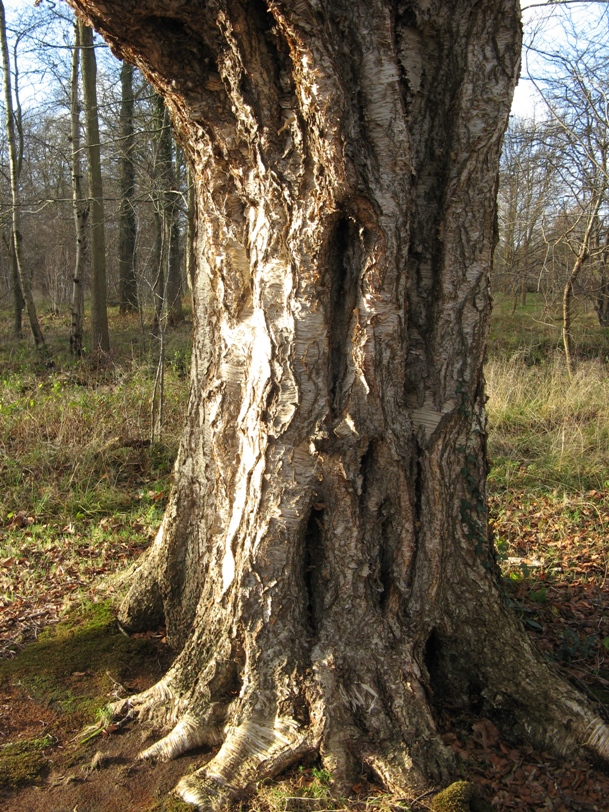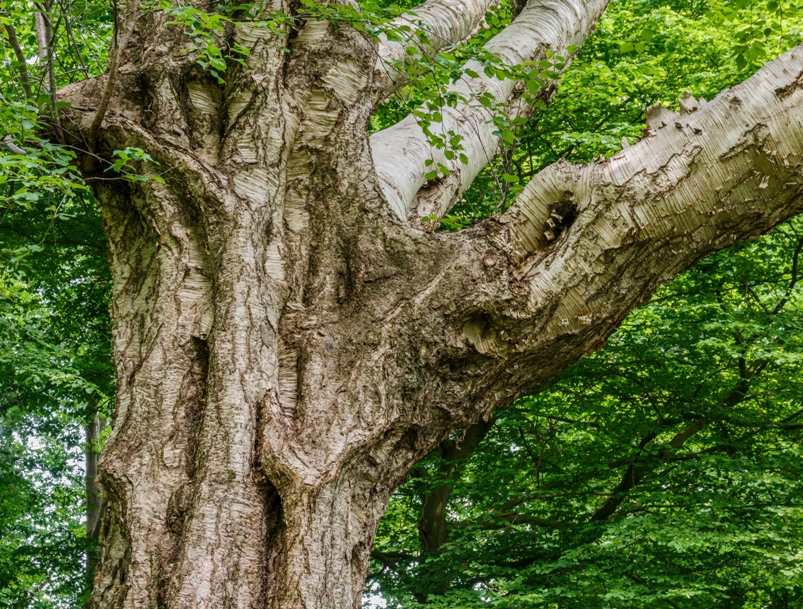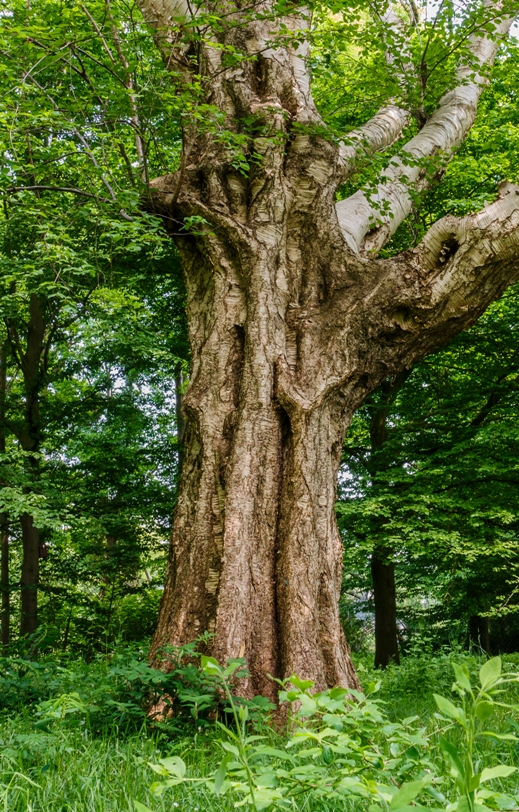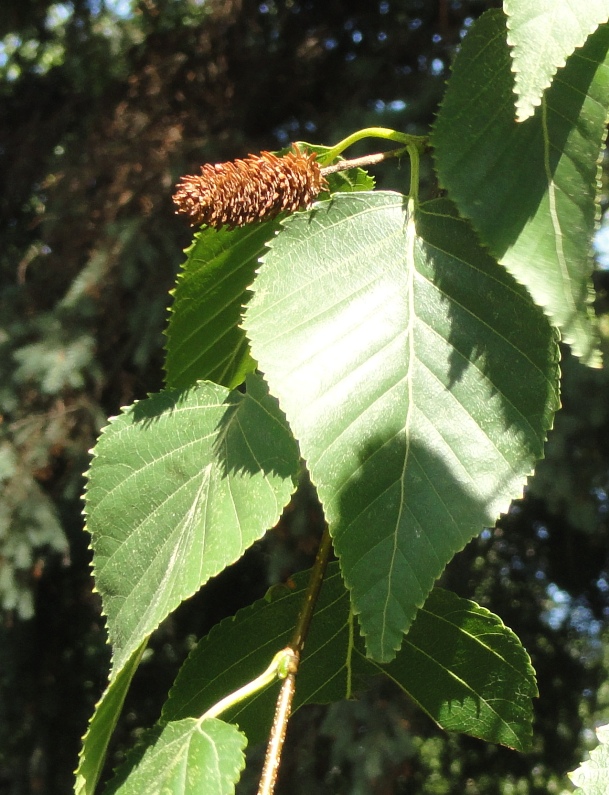Erman's birch or gold birch or stone birch
Betula ermanii
Birch family (Betulaceae)
White and gold
The gold birch can take on many habits. The tree is native to the cold of Siberia across to the mountains of Japan, where it grows between rocks and stones. The colder the climate the smaller the habit the gold birch adopts. In such conditions several stems usually grow from a single point so the tree is barely distinguishable from a bush. If the conditions are less extreme, the tree can reach 20 meters high with only one thick straight trunk. The fine, white bark peels off in thin, pinkish strips. The peeling bark together with its reddish coloured twigs give the tree a bronze golden glow. This golden colour is further reinforced in the autumn when the small, toothed leaves turn bright yellow.
Themes
Crown jewel in the Haren Botanic Garden.
The wood is hard and dense, and is used for construction and making furniture. It is also cultivated as an ornamental.
Details
| Description: | Tree, up to 20 m tall, sometimes multi-stemmed, with peeling cream coloured bark on the trunk, papery brown bark on the branches; coarsely toothed, ovate leaves turning yellow in autumn. |
|---|---|
| Distributions: | Northeast asia |
| Habitat: | Forests, 1000-1700 m. |
| Year cycle: | Perennial (polycarpic decidous) |
| Hardiness: | Colder than -4 f (very hardy) |
| Flowering period: | April |
| Flower color: | Yellow, brown |
| Notes on flowers: | Yellow-brown male catkins appear together with the leaves in spring. |
| At its best: | Oktober |



